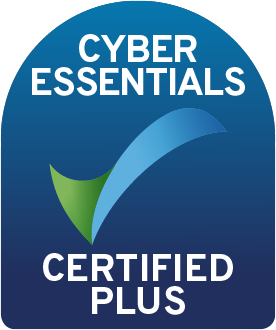TL;DR
LMS platforms ensure business continuity and support for remote workers through mobile-accessible training, automated compliance tracking, and centralised content delivery. Key benefits include reduced training costs, enhanced employee engagement via interactive learning and gamification, streamlined remote onboarding, and real-time analytics for performance optimisation. Cloud-based solutions such as the Totara and Moodle LMS solutions from Hubken enable consistent training across global teams while supporting upskilling initiatives and maintaining regulatory compliance in hybrid work environments.
- LMS platforms provide the flexibility and accessibility for online training
- LMS platforms ensure all employees have access to the same high-quality training content
- Your LMS provides a single, centrally-managed place for all learning materials
- LMS platforms can deliver personalised and tailored content and training modules based on an individual's role, department, location, seniority, etc
- Makes it easy to monitor and track progress regardless of location, including supporting regualtroy compliance and mandatory training modules
Today's modern LMS platforms
Today's Learning Management Systems (LMS) play a key role in keeping businesses running smoothly and supporting hybrid and remote employee training. They offer practical features like mobile access, centralised training content, and automatic progress tracking-making learning consistent, easy to access, and efficient no matter where employees are located. These platforms help remote teams stay connected, support skill development, and ensure compliance through tools like personalised learning paths and automated monitoring.
Keep reading to find out why e-learning is essential for business continuity and for remote workers to succeed.
1. Accessible and consistent training
L&D is a powerful function within any business or organisation as it has the ability to transform day-to-day operations and contribute to overall success and progress. From comprehensive induction training to long-term personal development plans, creating opportunities for continuous L&D will ensure that employees are well-equipped to perform in their roles and achieve the best outcomes for the organisation. However, for remote workers, effective L&D can only be successfully achieved with the help of e-learning.
Using an e-learning platform such as a learning management system (LMS) will ensure that L&D programmes are accessible to everyone, regardless of location. Learners simply use their personal login details to gain immediate access to an entire learning ecosystem, at home and anywhere else.
What’s more, e-learning will help ensure training is consistent for each individual learner. When L&D programmes are delivered without the help of an e-learning platform, employees may have to receive training via outdated training materials or from teachers/trainers with varying skill sets and knowledge bases – resulting in inconsistent training. Additionally, a remote working model can lead to complications with arranging training for employees, especially if training needs to be done in person. As a result, some employees may receive training sooner than others. But with an LMS, employees can gain instant access to the training they need.
2. Cost-effective learning
When L&D initiatives are implemented without the help of an e-learning platform, training may be carried out in a traditional face-to-face classroom environment. Whilst this can be effective for office-based organisations, it is often a costly exercise for remote workers. Whether training is being delivered to entire teams or individuals, organisations will find themselves spending a great deal of money on expenditures such as travel expenses, room hire, printed materials, and much more.
The most effective solution is to use an e-learning platform that can be accessed by remote teams, meaning training can be done autonomously and at any geographical location. While acquiring an e-learning platform will require upfront costs, these are outweighed by long-term cost-saving benefits and ROI regarding the overall effectiveness and success of L&D initiatives.
Want to find out more about how much an LMS costs? Read our eBook: The Hidden Costs of Buying an LMS.
3. Enhanced collaboration
A study found that one of the three biggest challenges associated with remote working is communication and collaboration at 17%. Remote workers can sometimes find it difficult to work as a team and for new starters navigating their way around their new role, it can be isolating if they don’t feel like they have sufficient opportunities to reach out to fellow colleagues and ask for help or advice.
An e-learning platform such as the Totara Engage learning experience platform (LXP) creates better opportunities for remote workers to engage in peer-to-peer collaboration and learning. LXPs allow learners to create, curate and share content with each other in real-time, including forums, wikis, blogs, and discussion boards. Totara Engage allows admins to create workspaces which serve as a virtual environment where learners can collaborate and communicate with one another; these can be created with specific topics or groups in mind – even creating spaces that are unrelated to work so that employees can get to know each other on a more personal level.
4. Comprehensive reporting and analytics
Many organisations yet to embrace remote working may argue that managers or team leaders will have less visibility of whether an employee is completing training as they cannot physically see what an employee is doing. However, using an e-learning platform will likely provide a better, more detailed and accurate insight into the progress and engagement of each individual learner.
With LMS reporting tools, admins or managers can track learner progress in real-time, looking at sign-on rates, course completion rates, assessments pass marks/grades, and much more. Reporting data can be used to not only ensure that remote team members are completing training and meeting their learning objectives, but also to identify knowledge gaps. L&D admins can gather automated reports to drive feedback sessions and ensure employees are recognised for their progress and achievements.
5. Increased engagement with gamification
One of the toughest challenges for L&D teams carrying out remote training is ensuring that engagement levels remain high. Ensuring that employees remained engaged with their learning programmes and courses is no mean feat, regardless of whether training is delivered in a face-to-face setting or remotely. E-learning is essential for any organisation looking to boost engagement levels, as the variety of content, media types, and opportunities for interactivity can see a rapid incline in engaged learners.

One of the best ways to boost engagement for remote teams is to introduce gamification into an L&D strategy. Gamification takes the usual elements and mechanics of gameplay and applies them to e-learning lessons. Gamification creates a more engaging and motivating learning experience with fun and light-hearted courses and assessments. Gamification can also help foster a sense of community amongst remote teams, with elements such as leader boards and badges – encouraging employees to complete training and engage in some healthy competition with their fellow colleagues.
6. Safeguarding mental health and well-being
Prioritising the well-being of employees will always be of the utmost importance for any organisation looking to get the best out of their teams. When working remotely, it may be more difficult to create opportunities for employees to voice their concerns about their own well-being and mental health in comparison to opening up a face-to-face conversation in the office. With e-learning platforms, organisations can make it clear that employee well-being is prioritised in a number of ways.
L&D teams may choose to include well-being focussed content in their L&D programmes, asking employees to work their way through training designed to ensure they feel supported and armed with information that will help them take care of their own well-being. Additionally, e-learning platforms with forums, discussion boards and polls can provide an opportunity for remote workers to have their say by sharing their own tips and advice or asking for support when needed.
Support your remote teams with our e-learning solutions
Whether you’re just starting out your e-learning journey or you’re looking to upgrade your existing platforms, we’ve got a range of e-learning solutions to help you provide the best learning experience for your remote workers. Our platforms range from LMSs to full talent experience platforms (TXPs) and if you’d like to find out which platform would best suit your needs – read our full breakdown here. Or, if you’d like to chat with one of our e-learning experts, book a demo or get in touch here.
Frequently Asked Questions
Why is e-learning essential for remote workers' success and productivity?
E-learning is crucial for remote workers because it provides accessible, consistent training regardless of location or time zone.
With 65% of employees wanting to remain remote post-pandemic, an LMS ensures instant access to comprehensive training materials, eliminates geographical barriers, and delivers consistent learning experiences.
This accessibility directly contributes to better business outcomes, increased productivity, and higher employee satisfaction rates that organisations with remote teams consistently achieve.
How does e-learning reduce training costs for remote teams compared to traditional methods?
E-learning significantly reduces remote training costs by eliminating expenses associated with traditional face-to-face training, including travel expenses, room hire, printed materials, and accommodation costs.
While e-learning platforms require upfront investment, they deliver substantial long-term ROI through autonomous learning capabilities that allow employees to train from any geographical location. This cost-effective approach makes comprehensive L&D programs financially viable for organisations with distributed remote workforces.
What features help remote workers stay engaged with e-learning programs?
Key engagement features for remote workers include gamification elements like leaderboards, badges, and healthy competition that foster community spirit among distributed teams.
Interactive content types, varied media formats, and collaborative tools such as forums, wikis, and discussion boards enhance engagement levels.
LMS platforms like Totara have incorporated LMX features to create virtual workspaces for peer-to-peer learning and real-time content sharing and collaboration.
How do e-learning analytics improve remote team management and performance tracking?
E-learning platforms like Totara provide comprehensive reporting and analytics that offer better visibility into remote worker progress than traditional methods.
Managers can track real-time data including sign-on rates, course completion rates, assessment grades, and engagement metrics.
These automated reporting tools help identify knowledge gaps, drive feedback sessions, ensure learning objectives are met, and recognise employee achievements. This data-driven approach enables more effective remote team management and personalised development planning.
Why should I use Hubken for employee onboarding?
Lorem ipsum dolor sit amet, cum eu graecis albucius accusata, vivendo probatus. Nihil facete ut vix, an cum malorum patrioque. Lorem ipsum dolor sit amet, cum eu graecis albucius accusata, vivendo probatus. Nihil facete ut vix, an cum malorum patrioque.
How does LMS technology support remote and hybrid workforce training?
LMS technology supports remote and hybrid teams by providing a central platform to deliver, manage, and track training, regardless of location. Employees can access courses and learning materials at their convenience, allowing for flexible, self-paced learning. This ensures consistent training across the organisation while boosting engagement and productivity in dispersed teams.
How do learning systems handle multiple UK office locations and remote workers?
Modern learning systems support multiple office locations and remote teams by centralising training on a single, cloud-based platform that's accessible anytime, anywhere. They offer mobile-friendly, multimedia content and interactive tools like forums and workspaces to ensure consistent learning experiences across all teams. Features like social learning, personalised pathways, and automated reporting help deliver equal opportunities for engagement and development. Hubken’s Totara and Moodle solutions are specifically designed to help UK organisations scale their L&D efforts, supporting remote access, content delivery, and collaboration, regardless of geographical location or working model.

Book a free e-learning demo
Book a demo with one of our e-learning experts and learn first-hand how an e-learning platform can improve your organisation's L&D for remote workers.
.png?width=1080&height=520&name=Blog%20CTAs%20(18).png)
.png?width=1080&height=520&name=Blog%20CTAs%20(17).png)



